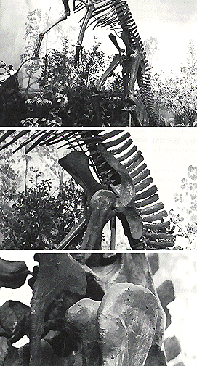- Close examination of the skeleton reveals that the head of the femur articulates with the pelvis at
the point where two of the bones, the pubis and ilium, join together, which is the point of
weakness. This suggests that the body could have been held in an upright position.
- They were functionally bipedal because the hindlegs are considerably larger than the
forelegs where the hind legs probably carried most of the weight.
|
 |






